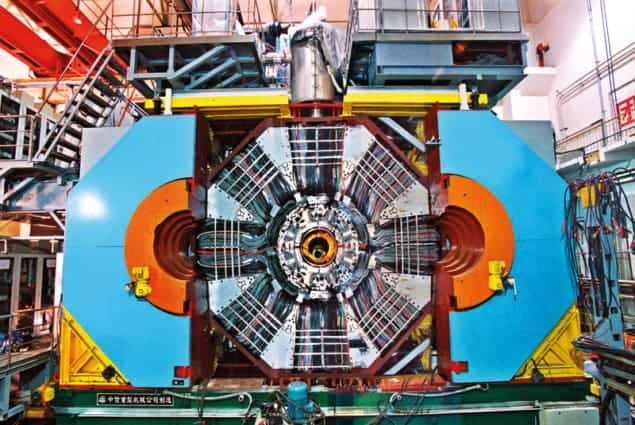
Particle physicists in China have unveiled plans to build a huge 52 km particle collider that would smash electrons and positrons together to study the Higgs boson in unprecedented detail. The so-called “Higgs factory”, if given government approval, would be built by 2028 and put the country at the forefront of international particle physics.
Researchers are currently preparing a proposal to the government to carry out a full R&D study into the machine, which they envisage having an energy of 250 GeV. However, Yifang Wang, director of the Institute of High Energy Physics (IHEP) in Beijing, warns that the project is still in its infancy. “We are still at a very early stage of the discussion and we have a long way to go to get government support,” says Wang.
Vigorous pursuit
Even though the collider is a long way off, Brian Foster from Hamburg and Oxford universities, who is European regional director for the planned International Linear Collider (ILC), which is also designed to study the properties of the Higgs boson, says that Chinese researchers are nevertheless “pursuing it rather vigorously”. Yet he thinks that China would find it hard to build a machine on its own given that the country’s biggest collider – the Beijing Electron Positron Collider at IHEP – is just 240 m in circumference. “They maintain that this will be a Chinese project, although they also admit they don’t have the people to build it themselves, so assistance from the international community would be required,” says Foster.
That view is shared by theorist John Ellis at King’s College London and CERN, who says that China is now beginning to “reach out” to international partners. “They don’t have the expertise at the moment to build something of that size with the technology required,” says Ellis, who adds that China would be much further ahead now if they had been more involved in building CERN’s Large Hadron Collider (LHC).
Encouraging statements
Meanwhile, members of the International Committee on Future Accelerators (ICFA), which met in Valencia in July, reaffirmed in a closing statement their support for the ILC as well as a circular collider like that which China is proposing. “The ICFA continues to encourage international studies of circular colliders, with an ultimate goal of proton–proton collisions at energies much higher than those of the LHC,” the statement said.
Foster points out, however, that the proposed collider will “not interfere” with the ILC proposal, which Japan is currently considering hosting and has even begun discussing at ministerial level with governments in the US and Europe. “The physics output [of a 250 GeV circular electron–positron collider] compared with the ILC is very limited and of course it will need several years before it is in a state that it can be believably costed and proposed to proceed to a proper technical design,” he says.



